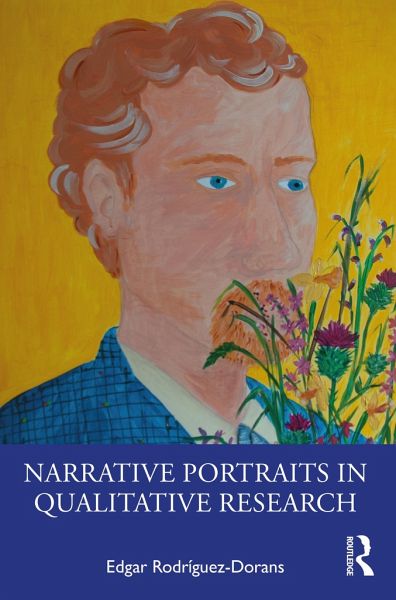
Narrative Portraits in Qualitative Research
Versandkostenfrei!
Versandfertig in 6-10 Tagen
48,99 €
inkl. MwSt.
Weitere Ausgaben:

PAYBACK Punkte
24 °P sammeln!
Narrative Portraits in Qualitative Research offers an analytical approach to qualitative data. Through narrative portraiture, research findings can be contextualised in broader social narratives without losing sight of the unique personal qualities of the research encounter.Drawing a parallel between the artistic work of a portrait maker in depicting a subject - sometimes an object - and the work of the researcher in exploring people's experiences, narrative portraiture invites a close-up into a person's narrated and embodied experience and argues that one of the main research findings in qual...
Narrative Portraits in Qualitative Research offers an analytical approach to qualitative data. Through narrative portraiture, research findings can be contextualised in broader social narratives without losing sight of the unique personal qualities of the research encounter.
Drawing a parallel between the artistic work of a portrait maker in depicting a subject - sometimes an object - and the work of the researcher in exploring people's experiences, narrative portraiture invites a close-up into a person's narrated and embodied experience and argues that one of the main research findings in qualitative research is the person themselves; their circumstances, and their life story. The book proposes four approaches to narrative portraiture: (1) a systematic approach to narrative analysis, (2) the use of phronesis in narrative portraiture, (3) the concept of 'imagined portraits' as a collaborative approach between visual arts and social sciences, and (4) the use of 'performative portraits' both as an analytic tool and product for research communication. This book will help qualitative researchers create first-person narratives that will give a glimpse into the participants' lives in a way that is simultaneously deep, concise, and evocative.
This book will be suitable for those interested in narrative methods and qualitative research in health care, education, and the social sciences.
Drawing a parallel between the artistic work of a portrait maker in depicting a subject - sometimes an object - and the work of the researcher in exploring people's experiences, narrative portraiture invites a close-up into a person's narrated and embodied experience and argues that one of the main research findings in qualitative research is the person themselves; their circumstances, and their life story. The book proposes four approaches to narrative portraiture: (1) a systematic approach to narrative analysis, (2) the use of phronesis in narrative portraiture, (3) the concept of 'imagined portraits' as a collaborative approach between visual arts and social sciences, and (4) the use of 'performative portraits' both as an analytic tool and product for research communication. This book will help qualitative researchers create first-person narratives that will give a glimpse into the participants' lives in a way that is simultaneously deep, concise, and evocative.
This book will be suitable for those interested in narrative methods and qualitative research in health care, education, and the social sciences.














